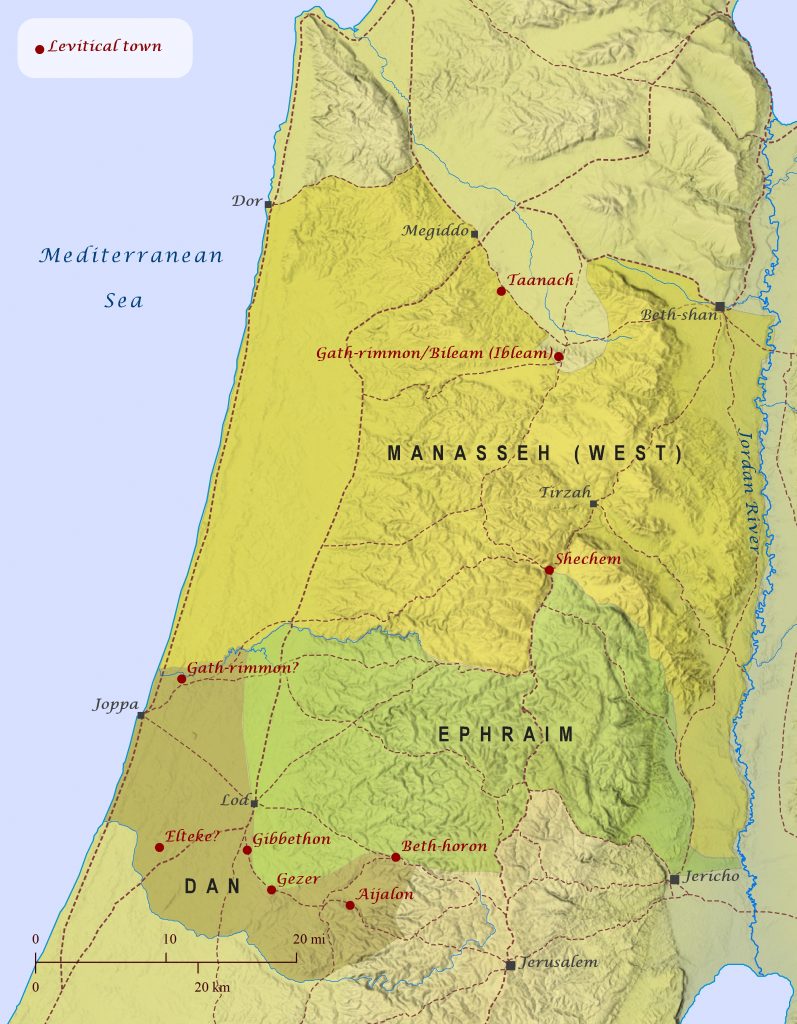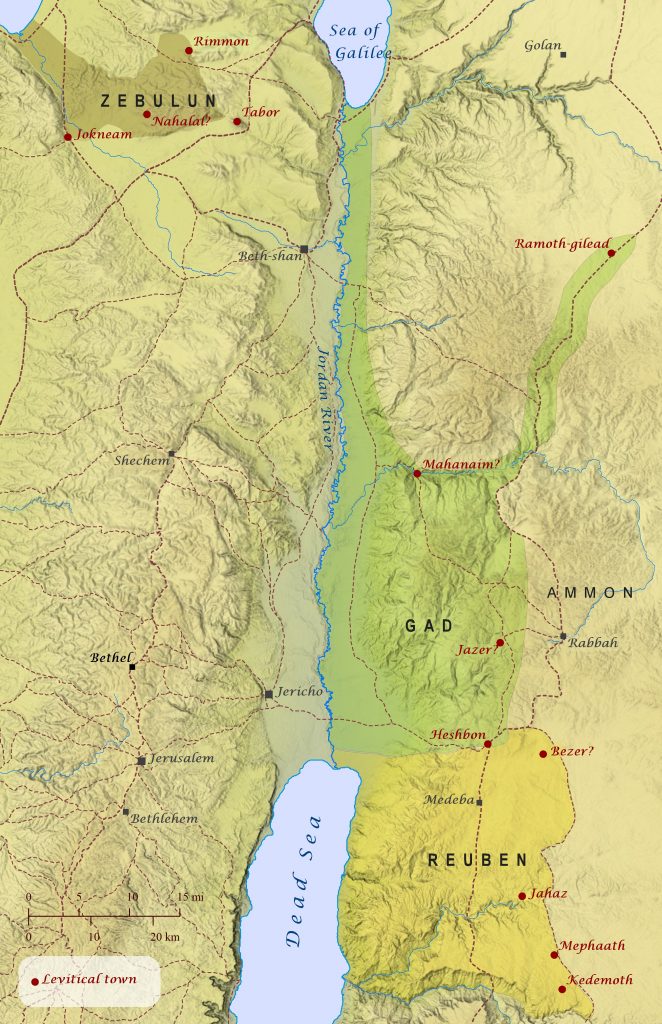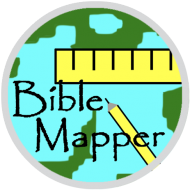After many Judeans (now called Jews) had been living in exile in Babylonia for several decades, the Persian king Cyrus the Great conquered Babylon in 539 B.C., and a year later he decreed that all exiled Jews in his kingdom could return to their homeland (Ezra 1:1-4; 2 Chronicles 36:22-23). A short time after this a group of about 50,000 Jews returned to Judea, which was now a very minor province within the vast Persian Empire (Ezra 1-2). This first group of returnees was led by the newly appointed governor Zerubbabel (who was perhaps also called Sheshbazzar). This first group of Jews immediately restored the altar of the Temple (Ezra 3-4), and then by 516 B.C. they finished rebuilding the Temple of the Lord (Ezra 6; Haggai 1). Several decades after this in 458 B.C., King Artaxerxes I appointed the Jewish scribe Ezra to lead another group of about 5000 Jews to Judea to restore proper Temple worship (Ezra 7-8; Nehemiah 7). None of these Jews under Ezra’s leadership would have been among those originally exiled from Judea, since Jerusalem had fallen to the Babylonians over 120 years earlier (2 Kings 24-25; 2 Chronicles 36; Jeremiah 39; 52). Then around 445 B.C., Nehemiah, a Jewish official in the Persian royal court, obtained permission from Artaxerxes I to travel to Judea to rebuild the walls of Jerusalem. Soon after Nehemiah arrived in Jerusalem he organized those living in Jerusalem and the nearby towns into work teams and completed the walls in 52 days (Nehemiah 2:1-10; also see Nehemiah’s Jerusalem here).

? download hi-res file 🔍 see in TimeGlider
Levitical Cities
Numbers 35:1-8; Joshua 21:1-42; 1 Chronicles 6:54-80
Unlike the other tribes of Israel, the tribe of Levi was not allotted any portion in the Promised Land for their inheritance (Numbers 18:20-24; 26:62; Deuteronomy 10:9; 18:1-2; Joshua 18:7). Instead, they were supported by the tithes of the other Israelites and were allotted various towns to inhabit among the other tribes. These towns were not occupied solely by Levites, nor were the Levites required to live in these towns. These towns also continued to be regarded as belonging to the tribes within whose boundaries the towns were located. Each of the four clans of Levites was allotted a specific set of towns from a specific group of tribes, as shown in these maps. Each of the clans were assigned various responsibilities for the upkeep of the Tabernacle and its furnishings. The Gershonites were responsible for the tent of the Tabernacle, its coverings, and its various curtains and ropes. The Kohathites were responsible for the sanctuary, the ark, the table, the lampstand, the altars, and the articles of the sanctuary. The Merarites were responsible for the Tabernacle’s frame, crossbars, posts, bases, and equipment, as well as the equipment of the surrounding courtyard (Numbers 3:25-37).
Priestly Kohathites:

Non-Priestly Kohathites:

Gershonites:

Merarites:

Nehemiah’s Walls Are Dedicated
Nehemiah 12:27-47
In 445 B.C., about 13 years after the scribe Ezra led a small group of Jewish exiles back to Judea, Nehemiah received permission from Artaxerxes I of Persia to travel back to Jerusalem as well and rebuild the city (Nehemiah 1-2). Nehemiah began by rebuilding the walls, which remained in ruins after the Babylonians had besieged the city in 586 B.C. Prior to that, the walls of Jerusalem encompassed the western hill as well as the Temple of the Lord and the City of David (see map), but Nehemiah’s repairs do not appear to have included the western hill. Likewise Nehemiah’s walls no longer encompassed the Gihon Spring, which was likely no longer accessible from the outside after the Babylonians destroyed its protective towers, though its waters continued flow underground to the Lower Pool. Despite opposition from several other neighboring nations, Nehemiah and the leading families of Judea completed all the repairs in an incredibly short span of 52 days (Nehemiah 6:15). After this, Nehemiah called for Levites throughout Judea (see map) to come to Jerusalem to celebrate and dedicate the new wall. After assembling the Levites, the priests, and the musicians near the Valley Gate, Nehemiah divided them into two groups to walk along the top of the wall around much of the city. He sent the first group in the direction to the right (that is, counter-clockwise) toward the Dung Gate, and he sent the other group in the other direction toward the Fish Gate. When the first group reached the Water Gate, it appears that they came down from the wall and headed to the Temple. When the second group reached the Gate of the Guard, they they came down from the wall and took their place in the Temple as well. Then great sacrifices were offered, and the sound of rejoicing in Jerusalem could be heard from far away.

? download hi-res file 🔍 see in TimeGlider
Jesus’ Final Journey to Jerusalem
Much like the difficulties of discerning the Israelites’ journey to the Promised Land (see here), the task of reconciling the four Gospel accounts of Jesus’ final journey to Jerusalem into one coherent itinerary has proven very challenging for Bible scholars. As with many other events during Jesus’ ministry, the accounts of Matthew, Mark, and Luke (often referred to as the Synoptic Gospels) present a noticeably similar account of Jesus’ final travels, while John’s Gospel presents an itinerary that is markedly different from the others. In general, the Synoptic Gospels present Jesus as making a single journey to Jerusalem, beginning in Capernaum (Luke 9:51), passing through Perea (Matthew 19:1-2; Mark 10:1) and Jericho (Matthew 20:29-34; Mark 10:46-52; Luke 18:35-19:10), and ending at Bethany and Bethphage, where he enters Jerusalem riding on a donkey (Matthew 21:1-11; Mark 11:1-11; Luke 19:28-44). John, on the other hand, mentions several trips to Jerusalem by Jesus (John 2:13-17; 5:1-15; 7:1-13; 10:22-23), followed by a trip to Perea across the Jordan River (John 10:40-42), a return to Bethany where he raises Lazarus from the dead (John 11), a withdrawal to the village of Ephraim for a few months (John 11:54), and a return trip to Bethany, where he then enters Jerusalem riding on a donkey (John 12:1-19). The differences between the Synoptics’ and John’s accounts are noteworthy, but they are not irreconcilable. The Synoptics, after noting that Jesus began his trip at Capernaum, likely condensed their accounts (as occurs elsewhere in the Gospels) to omit Jesus’ initial arrival in Jerusalem and appearance at the Festival of Dedication, thus picking up with Jesus in Perea (stage 2 of John’s itinerary). Then all the Gospels recount Jesus’ trip (back) to Bethany and Jerusalem, passing through Jericho along the way. Likewise, the Synoptics must have simply omitted the few months Jesus spent in Ephraim to escape the Jewish leaders (stage 4 of John’s itinerary) and rejoined John’s account where Jesus is preparing to enter Jerusalem on a donkey.
Synoptics:

John:

? download hi-res file (Synoptics)
Elam and the City of Susa
Though the nation of Elam receives limited attention in Scripture, the history of this ancient civilization spans nearly the entire breadth of the Bible from Genesis to Acts. After being listed among the descendants of Shem (Genesis 10:22), Elam is noted as one of the four Mesopotamian nations whose kings traveled to Canaan during Abraham’s time to deal with the cities of the plain that ceased paying tribute (Genesis 14). After this there is a long span of silence about Elam in the biblical record until Isaiah prophesied that the Root of Jesse will gather the surviving remnant of his people from faraway lands, including Elam (Isaiah 11:10-12). Later the prophet Jeremiah mentioned Elam in his prophecies as well, but his was a message of doom and exile for the Elamites, though he notes that the Lord would eventually restore their fortunes (Jeremiah 49:34-39). Ezekiel likewise foretold of destruction for the Elamites, who were among those who “spread terror in the land of the living” (Ezekiel 32:23-25). By the time of Daniel, Elam had been subjugated by the Babylonians. In one of Daniel’s visions he saw himself standing by the Ulai Canal in the citadel of Susa, the capital of the province of Elam. There has been much debate regarding which tributary Daniel was referring to, and virtually every tributary in the area has been suggested as a candidate. It appears that in ancient times all the rivers in this region flowed into what the Greeks called the Pasitigris River, which eventually emptied into the Persian Gulf. This river system has also been suggested by some scholars to be the Gihon River of the Garden of Eden, assuming that the “land of Cush” refers to the ancient homeland of the Kassites (Genesis 2:13). Like the rest of the ancient Near East, Elam eventually came under the domination of the Persian Empire. The Persians ruled their vast empire from three capital cities, including the ancient city of Susa in Elam. Thus, it was in Susa that Esther became the new queen of Persia and thwarted Haman’s plans to destroy the Jews. It was also in Susa where Nehemiah served as cupbearer to King Artaxerxes of Persia before receiving permission to travel to Jerusalem to rebuild it (Nehemiah 1). Susa also formed the eastern terminus of the great Persian Royal Road, from which government officials and couriers could travel with great efficiency all the way to Sardis near the western coast of Anatolia. The Elamite language–one of the oldest written languages in the world–served as one of the official languages of the Persian Empire. The last mention of Elam in the Bible is in the book of Acts, when Jews from all over the world, including Elam, were gathered in Jerusalem as the Holy Spirit descended upon the apostles (Acts 2:1-13).

